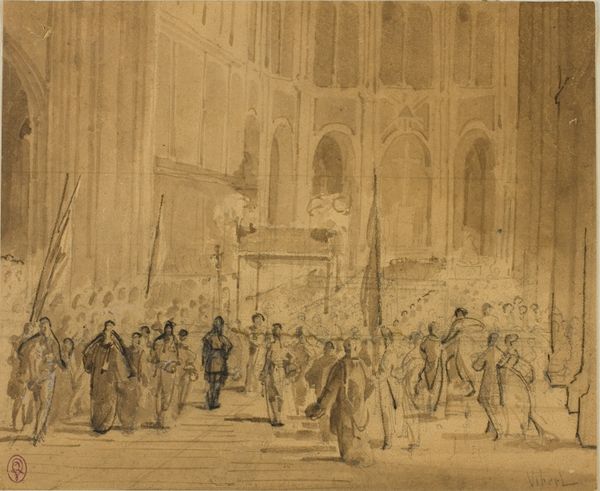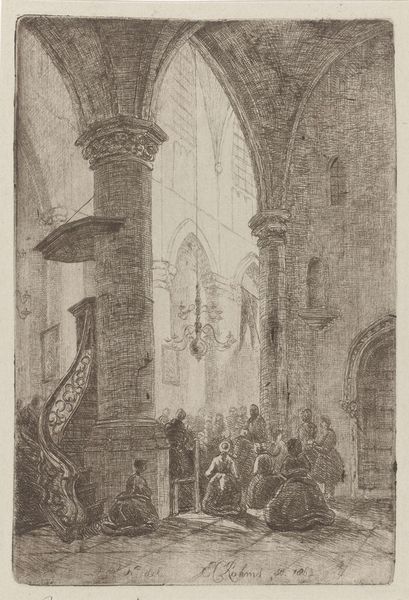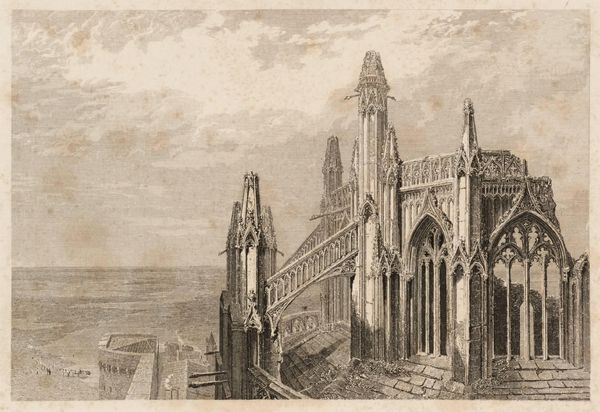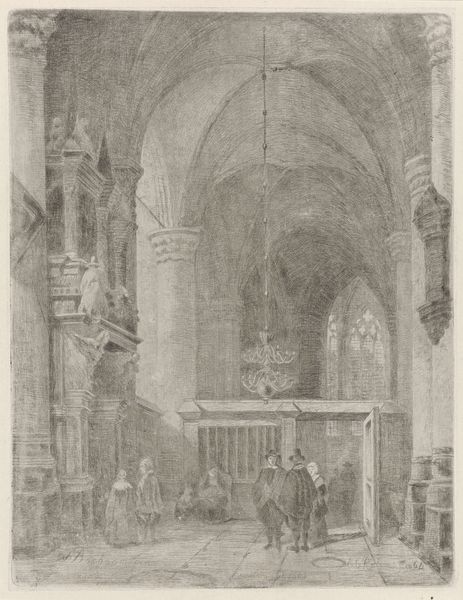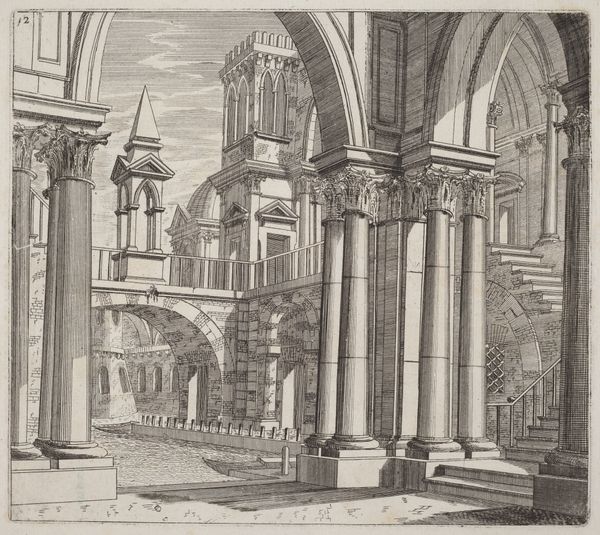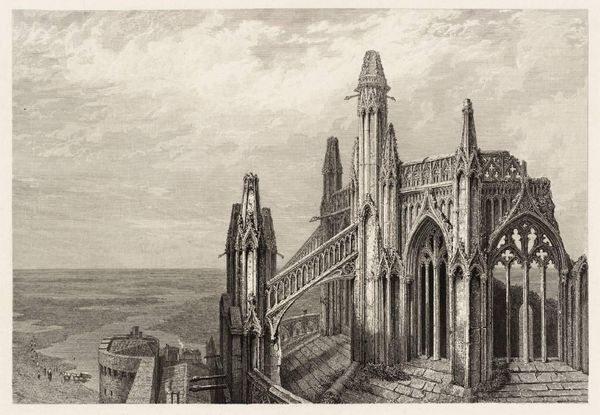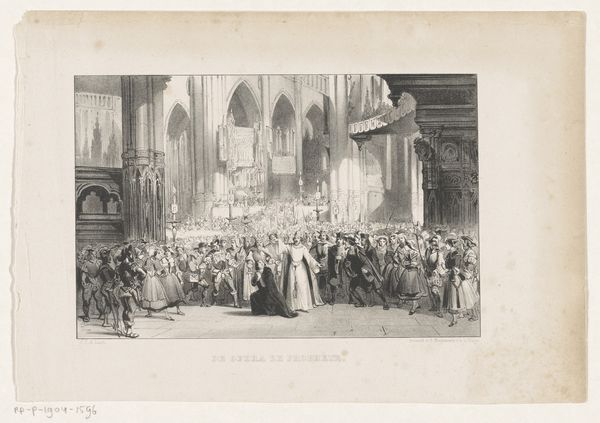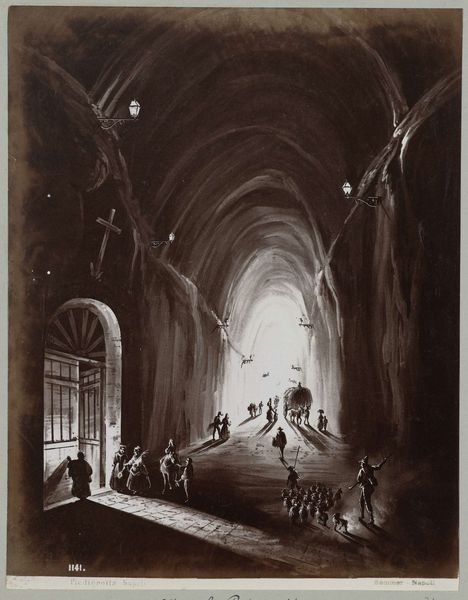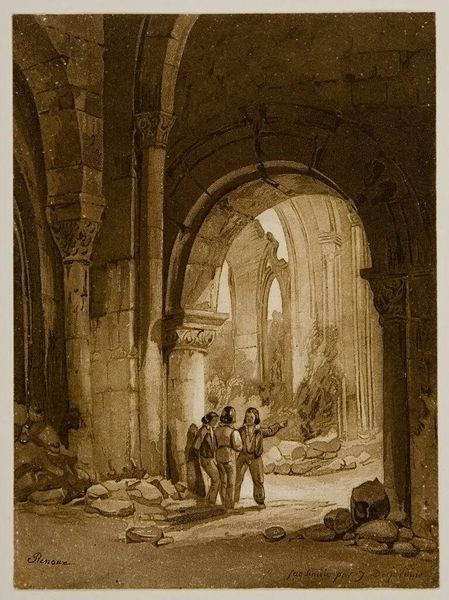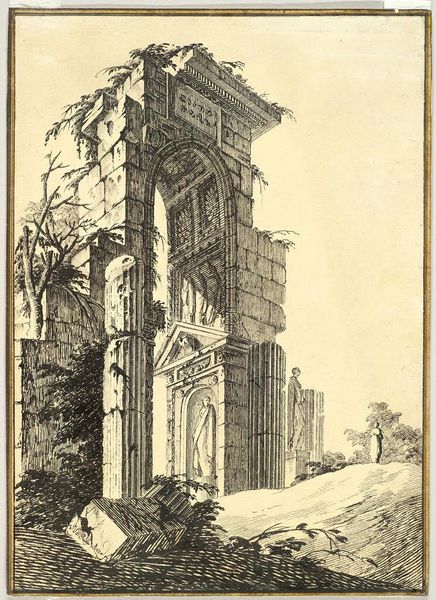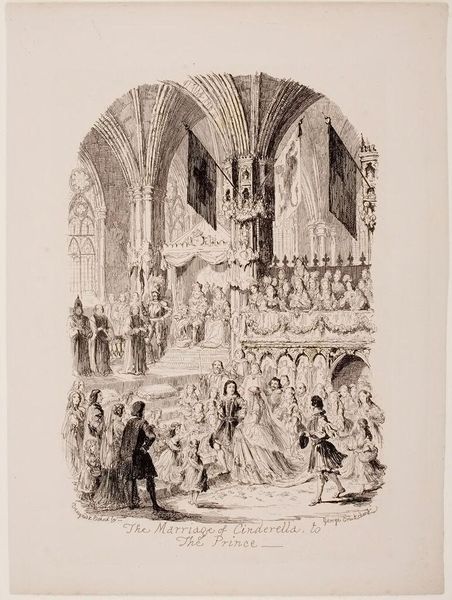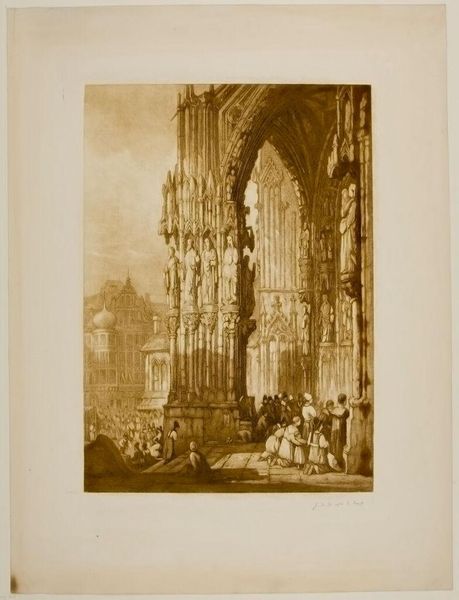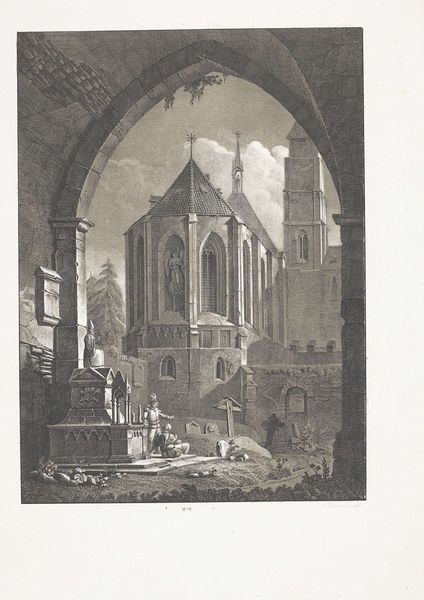
drawing, ink
#
drawing
#
landscape
#
charcoal drawing
#
figuration
#
ink
#
pencil drawing
#
romanticism
Copyright: Public Domain: Artvee
Curator: David Cox, working around 1840, captured this scene in "Figures on the Outer Staircase of a Castle," using ink and pencil to depict figures ascending stone steps. It's quite evocative, isn't it? Editor: It certainly is. The tonality, rendered in browns and greys, immediately gives the piece a melancholic, historical feel, almost dreamlike. The soft edges of the forms create a hazy, distant atmosphere. Curator: The architectural setting feels incredibly important. Consider the figures, mere mortals climbing towards a structure symbolizing power and dominance. Castles in this era evoke very specific ideas about class and privilege. Who ascends and who is kept out? Editor: I see that. From a formal standpoint, the strong diagonals of the staircase contrast with the verticality of the castle walls. This interplay creates a dynamic visual tension, pulling the eye both upward and inward. There's a clear focus created through tonal contrasts too—look how dark the entry looks in contrast to the relatively bright steps. Curator: Precisely! It's tempting to see the figures almost as archetypes—the privileged class ascending, and the working class almost weighed down on the steps. But then, we are forced to consider British imperialism during this era, in terms of its lasting effects of class divide, even today. How many people have literally and figuratively paid for that climb up? Editor: The limited palette draws attention to texture. There is something raw about the artist's hand in it all—a very active construction. Consider the lines of charcoal creating form and shadows; they seem quickly placed but remarkably descriptive of the stone's rough hewn texture. Curator: These castles aren't simply romantic backdrops, right? Their presence speaks volumes about control, lineage, the very structure of societal power that continues to echo even now. How might this resonate today for those whose access has historically been barred? Editor: Aesthetically, the subdued color palette combined with this dramatic architectural form achieves a feeling of grandeur laced with decay—a potent combination. It has left me considering ideas of value and timelessness within visual art. Curator: Understanding Cox’s context opens dialogue about today, challenging how we understand the enduring presence of architectural authority and our roles in questioning its influence. I think it offers us the chance to discuss representation more broadly, too. Editor: Yes, it prompts a consideration for how such themes find continued life through line, tone, and texture as well as a wider critical discussion about our history and identity.
Comments
No comments
Be the first to comment and join the conversation on the ultimate creative platform.
